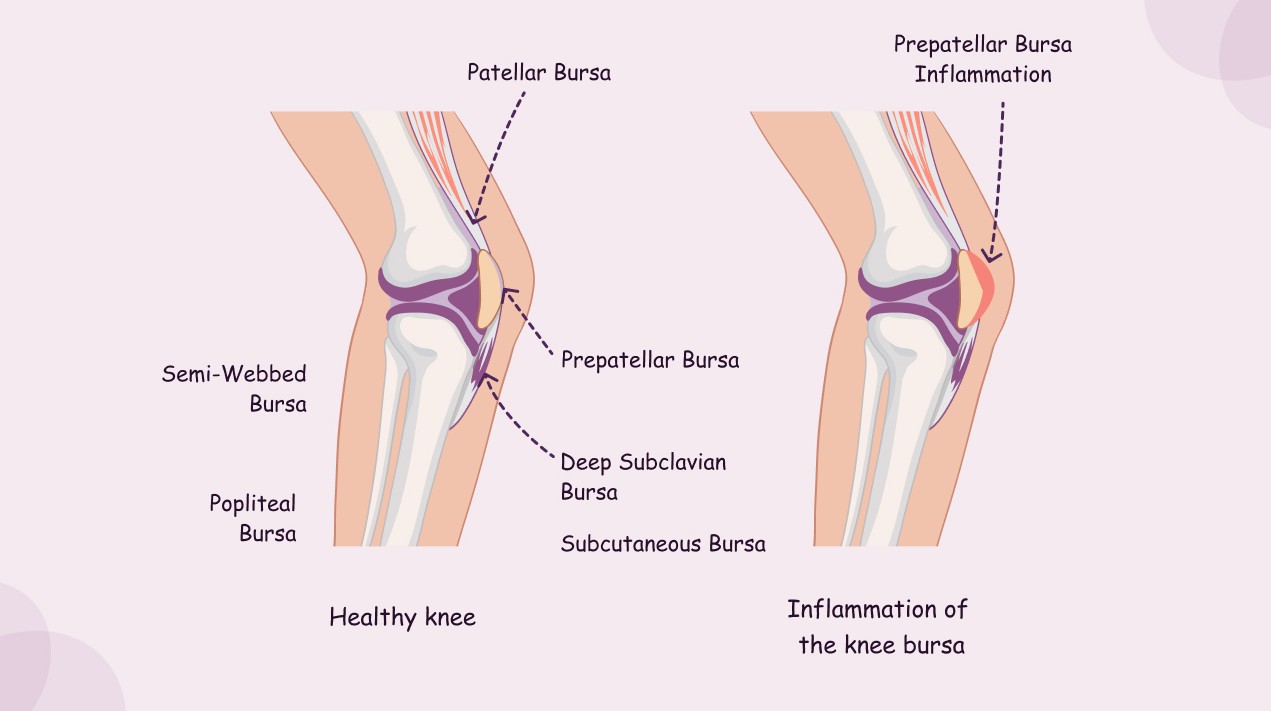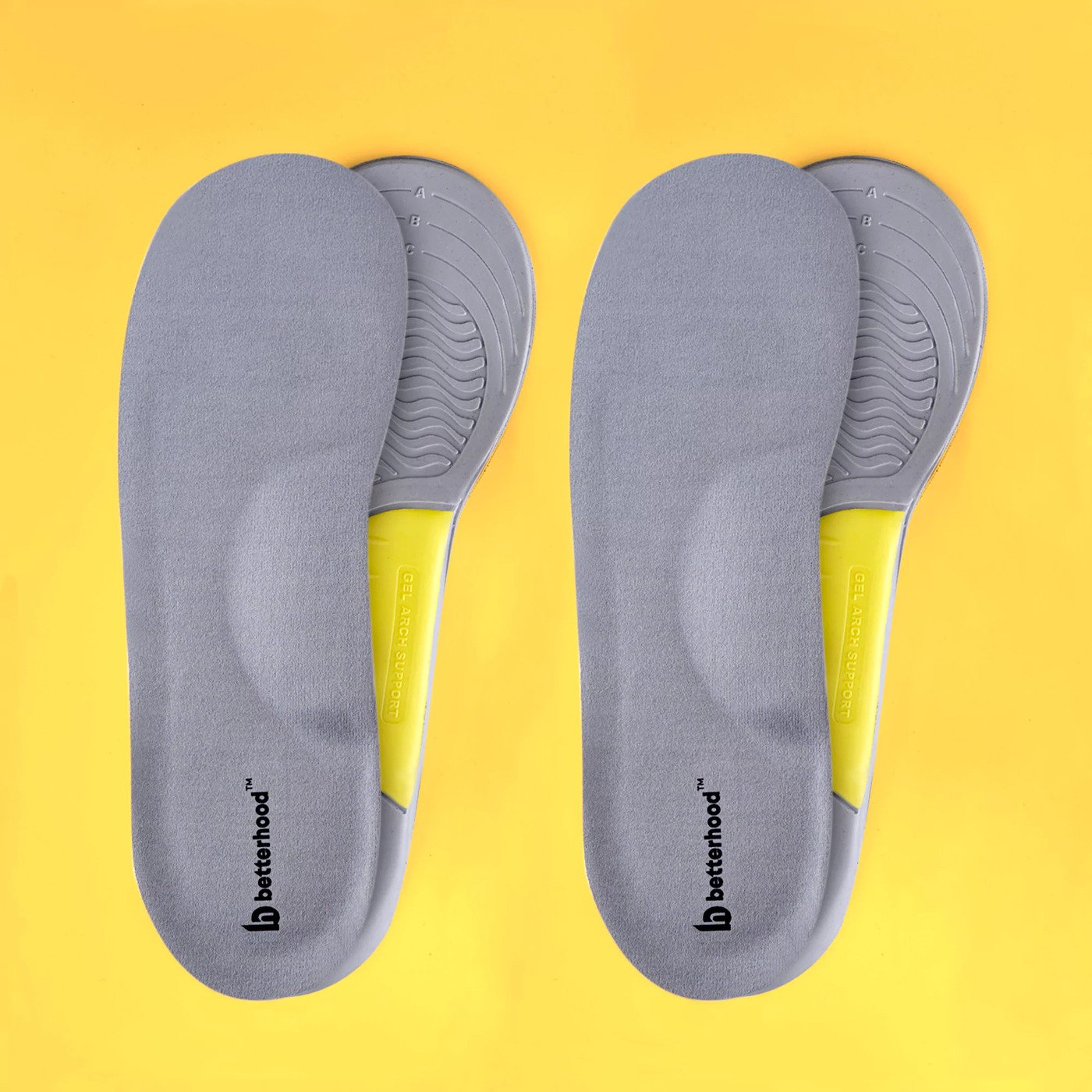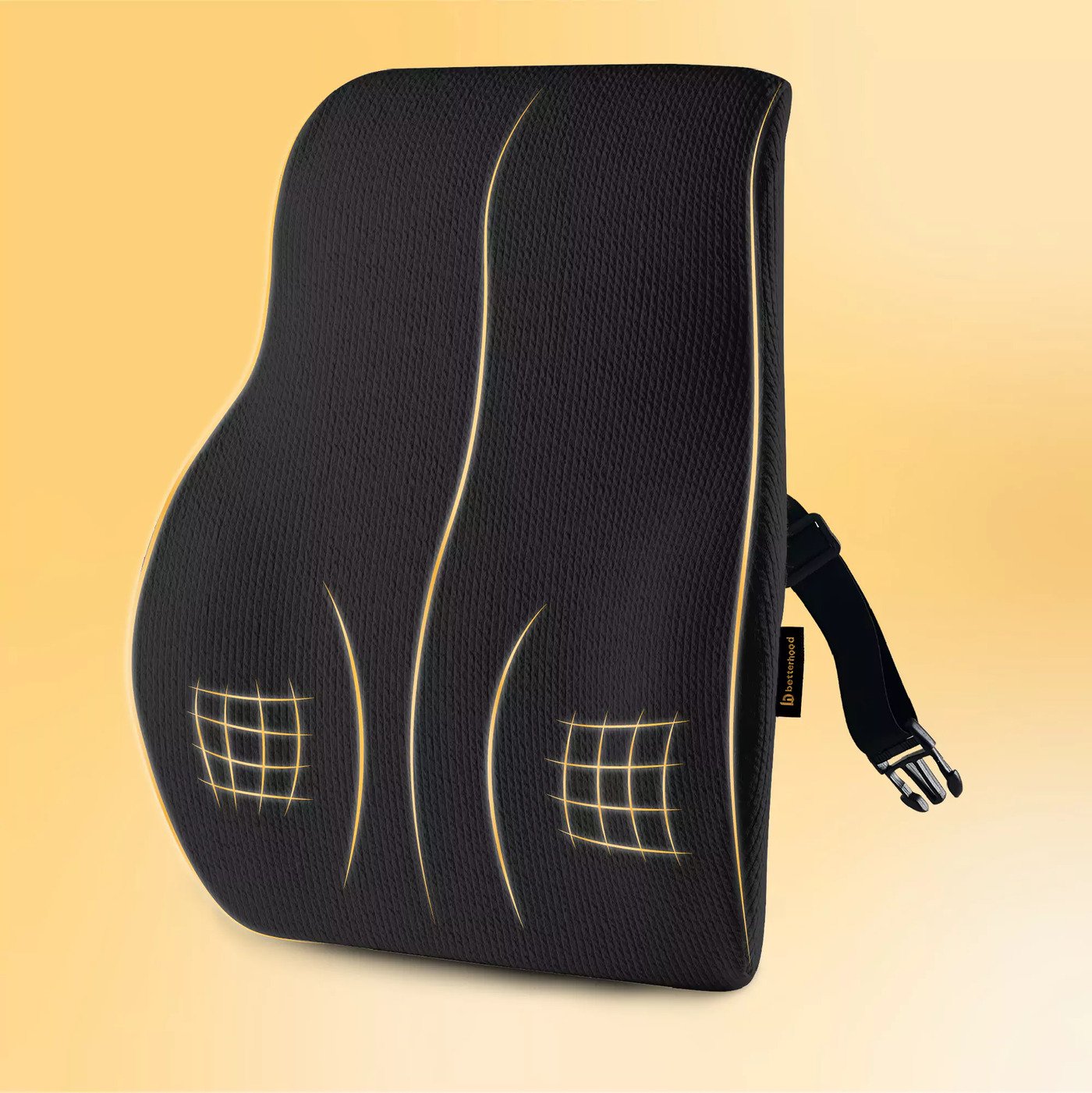Knee pain can be caused by a variety of conditions, and one of the most common yet often overlooked causes is bursitis. Bursae are small, fluid-filled sacs that act as cushions between the bones, tendons, and muscles around your joints. When these sacs become inflamed, they can lead to pain, swelling, and stiffness. In this blog, we’ll explore how bursitis develops, the factors that contribute to it, and the health conditions it could lead to.
What is Bursitis in the Knee?
Bursitis is the inflammation of the bursae, the fluid-filled sacs located around the knee joint. These sacs help reduce friction and allow the muscles and tendons to slide smoothly over the bones. When bursae become inflamed, they no longer provide the same cushioning and lubrication, leading to pain and discomfort. The knee contains several bursae, with the most commonly affected being the prepatellar bursa, located in front of the kneecap, and the infrapatellar bursa, just below the kneecap.
What Causes Bursitis in the Knee?
Several factors can contribute to the development of bursitis in the knee. The most common causes include:
- Repetitive Stress: Engaging in repetitive activities that place pressure on the knee joint, such as kneeling for long periods or squatting, can lead to irritation and inflammation of the bursae. This is especially true for people who spend a lot of time on their knees, like construction workers, gardeners, or athletes.
- Injury or Trauma: Direct injury or trauma to the knee, such as a fall or blow to the joint, can cause bursae to become inflamed. Even minor injuries, such as a twist or strain, can result in bursitis if the knee is subjected to stress while healing.
- Health Conditions: Certain health conditions, such as rheumatoid arthritis, gout, or diabetes, can increase the risk of developing bursitis. These conditions can cause inflammation in the body, including in the bursae, leading to pain and swelling in the knee.
- Overuse or Poor Posture: Activities that put prolonged strain on the knee joint, such as sitting for long periods or standing with poor posture, can also contribute to the development of bursitis. Improper alignment can stress the knee, causing the bursae to become inflamed over time.
What Are the Symptoms of Bursitis in the Knee?
The symptoms of knee bursitis typically include:
- Pain: Pain is the most common symptom of bursitis. It may be sharp and sudden or a dull, aching pain that worsens with movement. You may notice pain when kneeling, standing up from a seated position, or when moving the knee through its full range of motion.
- Swelling: Inflammation of the bursae often leads to noticeable swelling in the knee. The affected area may feel puffy, and the knee joint may appear enlarged or distorted due to fluid buildup in the bursa.
- Stiffness: The inflammation can lead to stiffness in the knee joint. This stiffness can limit your ability to bend or straighten your knee fully, making activities like walking or climbing stairs more difficult.
- Warmth and Redness: In some cases, the skin over the inflamed bursa may become warm to the touch and red. This is often a sign of acute inflammation and can be associated with increased pain.
What Health Conditions Can Bursitis in the Knee Lead To?
If left untreated, knee bursitis can lead to several health conditions or complications, including:
- Bursitis: The condition itself is a form of inflammation of the bursae. If not managed properly, the bursitis can become chronic, leading to ongoing pain and discomfort in the knee.
- Baker’s Cyst: A Baker’s cyst is a fluid-filled swelling that forms behind the knee, often as a result of bursitis. It occurs when fluid accumulates in the knee joint and is forced into a sac in the back of the knee. Baker’s cysts can cause pain and swelling, and in some cases, the cyst may rupture, leading to sharp pain and swelling in the lower leg.
- Medial Plica Syndrome: The medial plica is a fold of tissue in the knee joint that can become irritated due to overuse or injury. This irritation can cause pain on the inside of the knee and may be associated with bursitis. The plica can thicken and become inflamed, leading to further discomfort and reduced mobility.
How is Bursitis in the Knee Diagnosed?
A healthcare provider can usually diagnose bursitis through a physical examination and an assessment of your symptoms. They may palpate (feel) the affected area to check for swelling or tenderness. If necessary, imaging tests like X-rays or ultrasound may be used to rule out other potential causes of knee pain, such as fractures or arthritis. An MRI may also be helpful to assess the extent of the inflammation or damage to the bursae.
How is Bursitis in the Knee Treated?
Treatment for knee bursitis focuses on reducing inflammation, managing pain, and allowing the affected bursae to heal. Some of the most common treatments include:
- Rest: Resting the knee and avoiding activities that place stress on the joint is crucial for allowing the bursae to heal. You may need to modify your daily routine to prevent further irritation.
- Ice and Elevation: Applying ice to the affected knee for 15-20 minutes several times a day can help reduce swelling and numb the pain. Elevating the knee can also help reduce fluid buildup and inflammation.
- Anti-inflammatory Medications: Over-the-counter NSAIDs (non-steroidal anti-inflammatory drugs) like ibuprofen can help reduce inflammation and relieve pain. In some cases, a healthcare provider may prescribe stronger medications or inject corticosteroids into the affected bursa for more severe inflammation.
- Physical Therapy: Once the acute inflammation has subsided, physical therapy can help strengthen the muscles around the knee and improve flexibility. Strengthening the quadriceps, hamstrings, and calf muscles can help reduce strain on the knee and prevent future episodes of bursitis.
- Compression: Using a knee brace or wrap can provide additional support and help reduce swelling. However, compression should not be too tight, as it could restrict blood flow.
- Surgical Intervention: In rare cases where bursitis becomes chronic or does not respond to conservative treatments, surgery may be required to remove the inflamed bursa. This is usually a last resort and only considered after all other treatment options have been exhausted.
How Can Bursitis in the Knee Be Prevented?
Preventing bursitis in the knee involves reducing activities that place excessive stress on the joint and improving overall knee health. Some helpful prevention tips include:
- Proper Posture: Maintaining good posture while sitting, standing, and walking can reduce strain on the knee joint. Avoid prolonged kneeling or squatting, and if necessary, use knee pads or cushioning to protect the joint.
- Avoid Overuse: Repetitive movements, such as kneeling for long periods, can increase the risk of bursitis. Take regular breaks during activities that put strain on your knees, and avoid overexerting yourself.
- Strengthening the Muscles Around the Knee: Strengthening the quadriceps, hamstrings, and calf muscles can help support the knee joint and reduce stress on the bursae. Regular exercise, including strength training and flexibility exercises, can also help prevent knee injuries.
- Warm-Up Before Physical Activity: Before engaging in physical activity or sports, make sure to warm up properly to prepare your muscles and joints. This can reduce the risk of injury and inflammation.
Conclusion: Managing Knee Bursitis
Knee bursitis can be a painful and frustrating condition, but with proper treatment and care, it is manageable. If you are experiencing knee pain, especially after prolonged kneeling or other repetitive activities, bursitis could be the cause. Early intervention and addressing the underlying factors contributing to the condition can help prevent long-term complications. Consult with a healthcare provider to determine the best course of action and begin a treatment plan that works for you.
References
- Barlow, C. E., & Ackerman, M. R. (2013). The role of bursitis in knee pain: A review. Journal of Orthopedic Research, 27(3), 439-446. Available at: https://pubmed.ncbi.nlm.nih.gov/22234382/
2. Lewallen, D. G., & Matava, M. J. (2015). Knee bursitis: Diagnosis and management. Sports Medicine Journal, 38(4), 157-163. Available at: https://pubmed.ncbi.nlm.nih.gov/25643687/
3. Finnoff, J. T., & Jobe, F. W. (2017). Bursitis and other soft tissue injuries of the knee. The Knee Journal, 24(3), 202-208. Available at: https://pubmed.ncbi.nlm.nih.gov/28146058/









